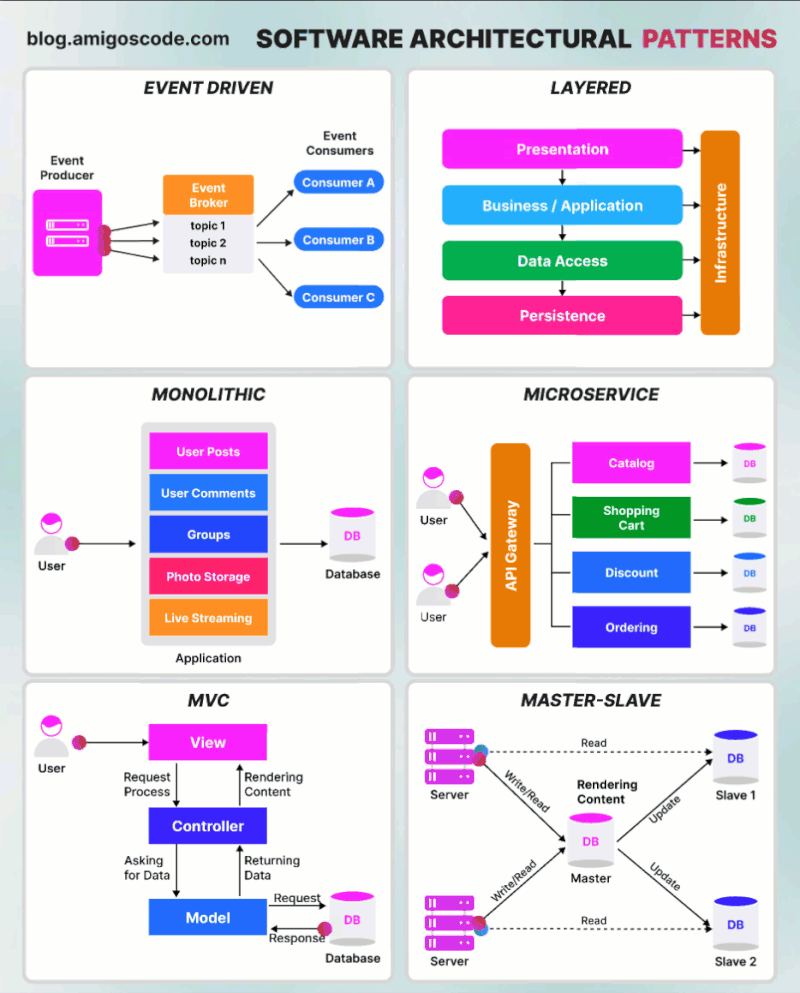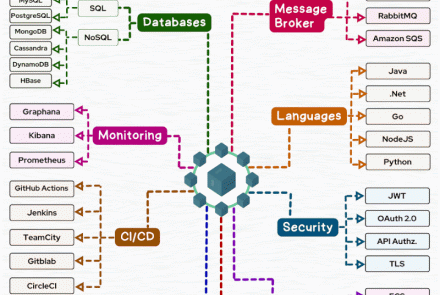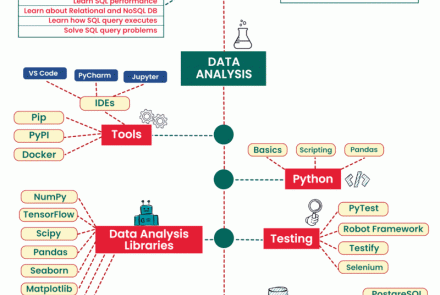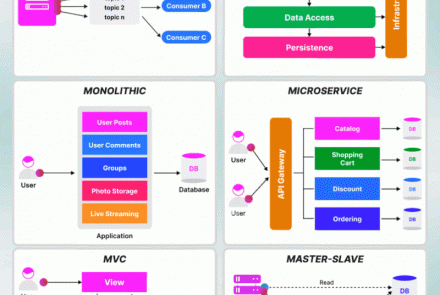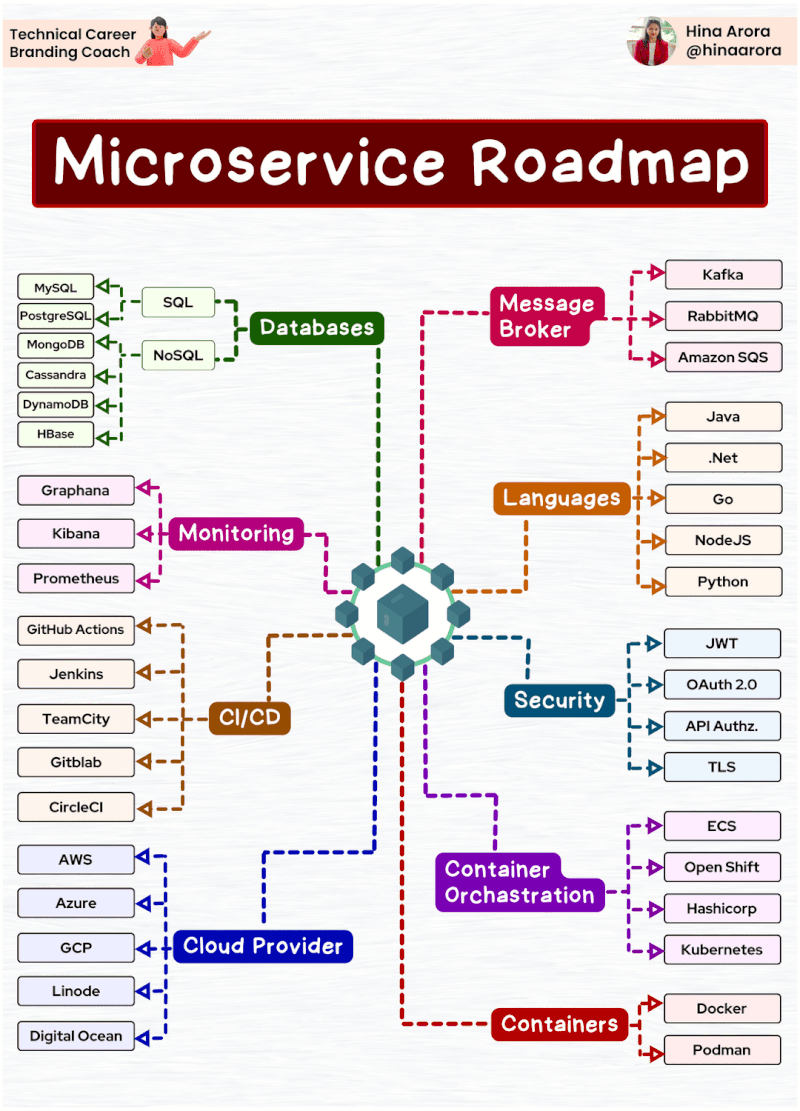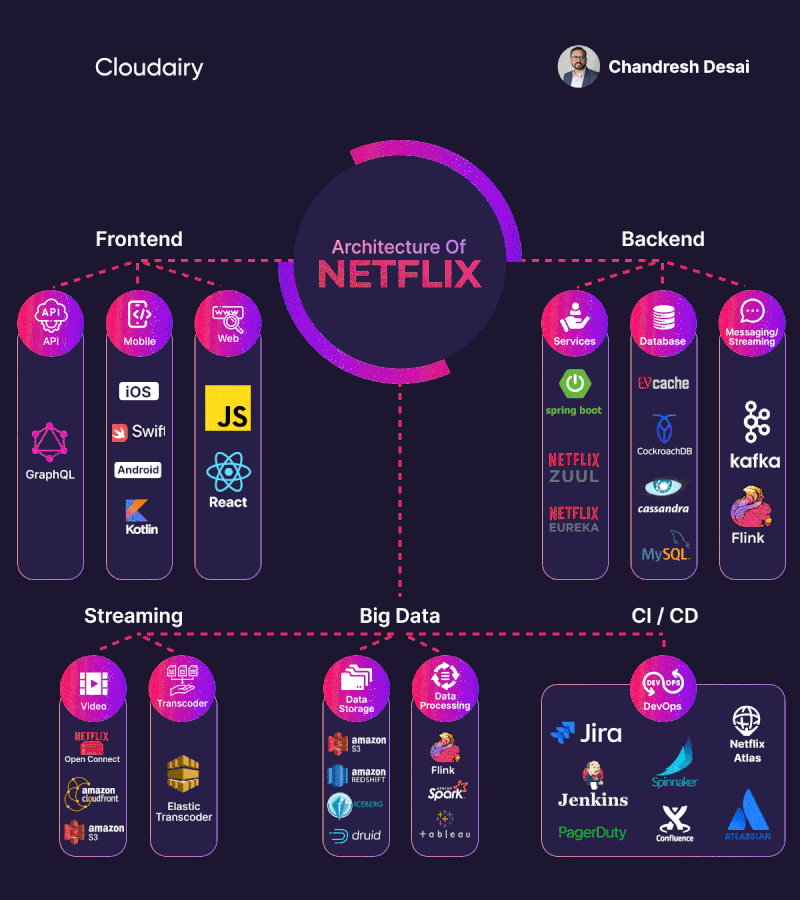Architectural patterns in software design
Let's explore a few:
1️⃣ **Event-Driven Architecture (EDA):**
System flow is driven by events, fostering asynchronous communication between components. Key concepts include events, event handlers, and asynchronous communication. 🔄 #SoftwareArchitecture #EventDriven
2️⃣ **Layered Architecture:**
Organize your system into distinct layers, each with specific responsibilities. Communication between layers ensures efficient functionality. 🎨 #LayeredArchitecture #SoftwareDesign
3️⃣ **Monolith:**
A traditional approach with tightly integrated components in a single codebase. Achieve unity with a single deployment unit. 🏰 #Monolith #SoftwareDevelopment
4️⃣ **Microservices Architecture:**
Break down applications into small, independently deployable services. Boost scalability, maintainability, and flexibility. 🌐 #Microservices #Scalability
5️⃣ **Model-View-Controller (MVC):**
Separate your application into interconnected components: Model, View, and Controller. Streamline user interface management and business logic. 👩💻 #MVC #SoftwareEngineering
6️⃣ **Master-Slave Architecture:**
Empower central nodes (masters) to control and manage subordinate nodes (slaves). Efficient task distribution and reporting. ⚙️ #MasterSlave #DistributedSystems
Choose the architecture that aligns with your application's unique needs and goals. Each pattern offers a tailored approach to elevate your software system!

